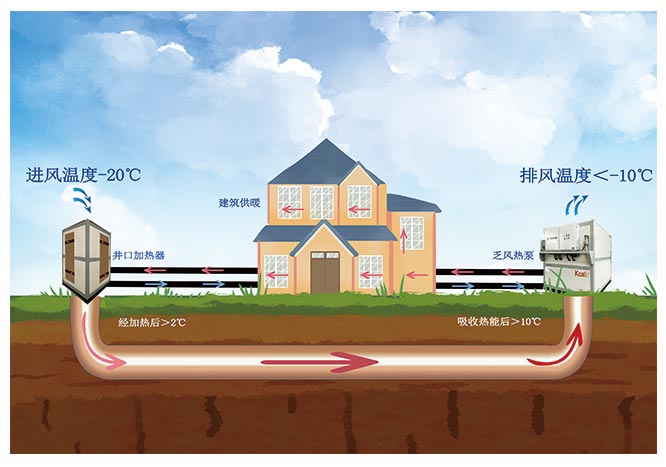The clean heating renovation of coal mine underground air supply is to improve the comfort and safety of the working environment, using clean energy and improving the air supply system for heating. This transformation aims to reduce reliance on traditional coal-fired heating methods, reduce air pollution and health risks, and improve the work efficiency of miners. The following are some key information about the clean heating renovation of underground air supply in coal mines:
Application of clean energy:
Electric heating: Using electricity as the main energy source to supply heating equipment underground in coal mines, such as electric heaters, electric hot air stoves, etc. This method does not generate exhaust gas and smoke, reducing the risk of air pollution.
Liquefied petroleum gas heating: Using liquefied petroleum gas as fuel to supply heating equipment underground. The complete combustion of liquefied petroleum gas reduces the emission of harmful gases.
Solar heating: Utilizing solar energy to collect and store heat energy to provide heating for underground coal mines. Solar heating systems can convert solar energy into thermal energy through solar collectors and transport the thermal energy underground through pipelines.
Improve the air supply system:

Efficient air supply equipment: Adopting efficient air supply equipment, such as high-efficiency fans and air supply ducts, to provide uniform hot air distribution and better air supply effect.
Air purification and filtration: Install air purification and filtration equipment to reduce dust and pollutant content in the underground air of coal mines and improve air quality.
Reasonable layout: Optimize the layout of the air supply system to effectively cover the entire underground area of the coal mine with hot air, ensuring uniform heating of the working area.
Security and monitoring:
Safety control system: Install a safety control system, including smoke detectors, temperature monitoring devices, and automatic control devices, for real-time monitoring and control of temperature and air quality in coal mines, ensuring the safe operation of the system.
Emergency warning: Establish an emergency warning system, including monitoring and warning devices for underground hazardous gases such as gas explosions, coal dust explosions, and carbon monoxide. Once a hazardous gas is detected to exceed the safe range, the system will issue an alarm and take corresponding safety measures.
Training and awareness enhancement:
Miner training: Provide heating equipment operation and safety awareness training for miners, including a correct understanding of the advantages of clean energy heating, correct use and maintenance of equipment, and emergency measures in emergency situations.
Safety promotion: Regularly carry out safety promotion activities to enhance miners' awareness of underground heating safety, strengthen their ability to identify and handle hazardous gases, and cultivate safety awareness.
Monitoring and evaluation:
System monitoring: Establish a monitoring system to monitor the working status, energy consumption, temperature, air quality and other parameters of underground heating equipment in real time, in order to timely identify and solve potential problems.
Improvement evaluation: Regularly evaluate the effectiveness and effectiveness of clean heating renovation, improve and optimize the system to improve efficiency and safety.
Through the renovation of clean air supply and heating in coal mines, reliance on coal can be reduced, air pollution and health risks in coal mines can be reduced, and the comfort and safety of miners' work can be improved. At the same time, adopting clean energy and improved air supply systems can improve energy utilization efficiency and reduce operating costs. Emphasizing training and enhancing safety awareness, as well as monitoring and evaluating the operational status of the system, can further ensure the sustainability and long-term effectiveness of the renovation plan.







Comment